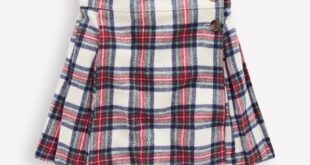- Clipper’s shares are likely to have further to run
- Demand will grow with shift to e-commerce
IC TIP:
Buy
at
595p
Bull points
Structural shift to e-commerce
Market leading position
Analyst upgrades
Fund manager pick
Bear points
Low margins
Cyclical exposure
Clipper Logistics (CLG) specialises in ‘value-added’ logistics for the retail sector. Unlike ‘final mile’ couriers such as DPD and Royal Mail (RMG), it doesn’t deliver products to end consumers; instead, it offers everything from warehousing and stock management, to picking, packaging and distributing products for retailers’ online and brick-and-mortar operations. Customers include the likes of John Lewis, Asos (ASC) and Boohoo (BOO).
The company is popular among funds, including the Liontrust UK Smaller Companies Fund (GB00B8HWPP49), where it is a top 10 holding. The fund’s co-manager, Victoria Stevens, points to “an increasingly formidable distribution network creating a barrier to entry within a fragmented market”. Indeed, Clipper has 52 sites spread across the UK and Continental Europe, spanning more than 14.5m square feet.
Clipper’s main market is the UK and around 90 per cent of its revenue and adjusted operating profit is generated by its logistics activities. The remainder comes from a commercial vehicles business that sells new and used trucks and vans, and provides aftermarket services.
Booming demand
Of the company’s logistics revenue, around 70 per cent is derived from e-fulfilment and returns management services for its customers’ e-commerce operations. Clipper has been a beneficiary of the structural shift to online shopping, which has been turbocharged by the pandemic. According to the Office for National Statistics (ONS), the proportion of UK retail sales conducted online hit a record high of 36 per cent in January.
Alex Game, co-manager of the Unicorn UK Growth Fund (GB0031269250) – which also has Clipper as a top 10 holding – says the company “has been instrumental in helping its customers adjust to an unprecedented shift from physical store to online sales”. But he believes e-commerce momentum will continue beyond Covid as “this is a trend that has been playing out for many years, but which has experienced a significant and most likely irreversible step change as a result of lockdown restrictions.” Clipper estimates the pandemic has accelerated retail’s shift online by as much as five years.
The six months to 31 October saw Clipper’s revenue from e-fulfilment and returns management surge by almost two-fifths year on year, to £188m, with underlying operating profit jumping by close to two-thirds to £15m. This reflects organic growth amid the online shopping boom, with the company processing record volumes for customers such as fashion brand Zara.
Clipper expects further organic revenue growth in the second half of the year, which will have been aided by consumers flocking online to do their Black Friday and Christmas shopping. Clipper’s logistics revenues in November and December came in 50 per cent higher than a year earlier.
Momentum has been less spectacular in non-e-fulfilment, although revenue still rose by a tenth in the six months to 31 October, to £82m. While customers such as Marks and Spencer (MKS) were hit by lockdown store closures, these pressures were partly offset by work with the NHS to store and distribute personal protective equipment (PPE).
Scale advantages
Logistics is a low margin affair, with Clipper recording a gross margin of 30 per cent and an adjusted operating profit margin of 7 per cent in the first half of its financial year. But with a market-leading position in UK retail logistics, its large scale makes for more efficient operations than competitors and also means it can serve national customer accounts.
Clipper’s contracts typically run between three and 10 years, but a high degree of renewal and cost competitiveness means it has been serving customers such as John Lewis and WM Morrison (MRW) for more than 20 years. Clipper has made itself essential to retailers’ operations and by integrating its warehouse management system into customers’ infrastructure, it is more difficult to switch to a different logistics provider.
Retailers can make supply chain savings by outsourcing their logistics operations, and Clipper offers shared distribution facilities that allow customers to flex their warehousing requirements according to their needs. For example, if a customer has excess warehouse capacity, the labour and space can be used to fulfil the needs of another customer, ensuring a more efficient use of resources. Technology can boost productivity further, and Clipper is increasingly introducing robots and automation to its warehouses.
The contracts keep rolling in
Clipper has continued to win contracts with both new and existing customers during the pandemic. It secured a five-year contract with luxury fashion retailer Farfetch in January, which sells products from over 1,300 premium boutiques and brands on its global platform. The deal marks Clipper’s entry into the Netherlands, and when fully ramped up it is expected to boost organic growth from mainland Europe by almost 30 per cent.
In February, Clipper also announced it had won a five-year logistics deal with River Island – for whom it already handles returns – and a 10-year contract with Mountain Warehouse. Starting later this year, both contracts are expected to immediately boost earnings, with Clipper guiding that its annual revenue will rise by over £40m. As a result of these deals, the company said that it would outperform market expectations for the year to 30 April 2022 and beyond, prompting another round of analyst upgrades.
Brokers have been getting increasingly bullish on Clipper’s prospect over the past year, nudging up their forecasts following the company’s full- and half-year results in August and December as well.
Less cyclical than you might think
Clipper does have cyclical exposure to a downturn in consumer spending, but this is somewhat offset by the nature of its customer contracts. Around 70 per cent of contracts are ‘open book’, meaning customers pay for the costs incurred in implementing the contract – including capital expenditure (capex) – plus a certain margin. Stevens notes these multi-year contracts make for “high levels of recurring and repeat revenues”, and they also offer Clipper protection from volume fluctuations and higher costs. The company also operates contracts with minimum volume guarantees, providing an extra layer of defence.
As more high street retailers come under pressure, Clipper is not overly reliant on any one customer – its five largest clients represent less than 15 per cent of adjusted operating profit – and it has historically been able to fill vacant warehouse space quickly. The company is also able to mitigate the risk of bad debts through terms that allow it to retain possession of a customer’s inventory.
Balance sheet firepower
Because Clipper rents its warehouses, it was sitting on £185m of lease liabilities at the end of October. Excluding these leases, net debt had fallen by close to two-fifths from the April year-end to £28m, equivalent to just 0.7 times cash profits (Ebitda). This was driven by a £10m working capital inflow amid increased customer activity, lower capex and £19m-worth of VAT and income tax deferrals.
Clipper’s net debt includes the funding of the initial capex required for some open book contracts, which customers pay back over the lifetime of their agreement along with a management fee. The company says it only undertakes this responsibility when the customer has a strong credit rating, and “recoverable capex” amounted to £32m at the end of October.
With a track record of strong cash generation, Clipper’s operating cash flow more than doubled in the first half of the year to £49m. The balance sheet strength should enable the company to pursue acquisitions to bolster its footprint and earnings, although it hasn’t been overly active on the merger and acquisition (M&A) front – having made 11 acquisitions since 2001, the last one was the £3m purchase of electronic repair business RepairTech back in 2017. Still, Clipper could use M&A to push further into mainland Europe, taking advantage of a fragmented market.
Will the momentum continue?
Clipper’s shares have almost quadrupled in value over the past year, currently sitting at 595p. But at 20 times consensus 2022 earnings, this is lower than its five-year average price/earnings ratio of 25. A forward enterprise value-to-sales ratio of 1.1 doesn’t seem overly demanding, either, given the company’s growth potential. Clipper is focused on fast-growing areas of retail, such as fast fashion, beauty and luxury.
The promising outlook means Clipper could even be a takeover target, with Bloomberg reporting last September that the company had attracted the interest of private equity players, including Kurt Geiger-owner Cinven. Clipper’s founder and chairman Steve Parkin also explored a potential bid with Sun Capital back in 2019, although the US buyout firm ultimately decided against tabling an offer.
Institutional investors certainly still have an appetite for the shares, with Parkin selling 11m shares for around £62m via a placing in January. The disposal was said to be part of his estate planning and to improve the liquidity of Clipper’s shares. Retaining a 14 per cent stake, Parkin has dropped to the second-largest shareholder after Liontrust Asset Management (LIO), but he says he remains “as confident and focused as ever” in the business he created almost 30 years ago.
It’s a business that is well placed to capture further growth both in the UK and abroad. Stevens notes that Clipper “remains under-penetrated in Europe, so international expansion remains a significant opportunity if the company can replicate its domestic success in other countries.”
Logistics may not be the most exciting sector, but companies such as Clipper will be fundamental to delivering the ongoing structural shift to online retail. As Clipper says, “logistics is not just a piece of the retail jigsaw; it is the jigsaw.” With that in mind, the shares likely have further to run.
| CLIPPER LOGISTICS (CLG) | |||||
| ORD PRICE: | 595p | MARKET VALUE: | £605m | ||
| TOUCH: | 594-596p | 12-MONTH HIGH: | 661p | LOW: | 130p |
| FORWARD DIVIDEND YIELD: | 2.3% | FORWARD PE RATIO: | 21 | ||
| NET ASSET VALUE: | 34.9p* | NET DEBT: | £189m** | ||
| Year to 30 Apr | Turnover (£m) | Pre-tax profit (£m)*** | Earnings per share (p)*** | Dividend per share (p) | |
| 2018 | 400 | 18.9 | 14.8 | 8.6 | |
| 2019 | 460 | 18.1 | 14.0 | 9.7 | |
| 2020 | 501 | 17.9 | 13.4 | 9.7 | |
| 2021*** | 645 | 30.6 | 23.8 | 11.8 | |
| 2022*** | 742 | 37.4 | 28.8 | 13.7 | |
| % change | +15 | +22 | +21 | +16 | |
| *Includes intangible assets of £38m, or 37p a share | |||||
| **Includes lease liabilities of £185m | |||||
| ***Numis forecasts, adjusted PTP and EPS figures | |||||
Last IC View: Hold, 396p, 24 Aug 2020
Source link





